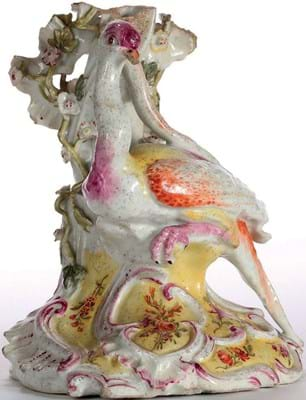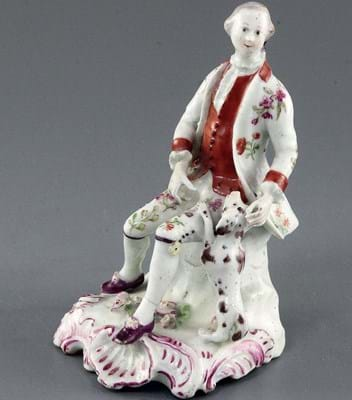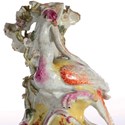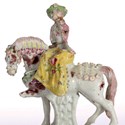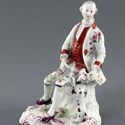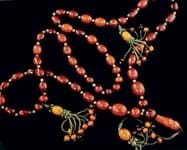These wares dated to c.1755- 57 are variously referred to as the Girl-on-a-Horse-factory, Transitional Derby or the Compass factory, although the surviving body of work is tiny.
As few as 14 pieces (eight different models) are known and of these just a handful have appeared for sale at auction.
The trio came for sale at Gorringe’s in Lewes on March 12 as part of the collection of the late Dr Dennis G Rice. It was his book Derby Porcelain: The Golden Years, 1750-70, published in 1983, that dubbed this group the Girl-on-a-Horse class. He wrote: “There exists a small group of figures attributable on stylistic and other grounds to a date around 1755. Their distinctive characteristics are that they are light in weight, have a paste that is dirty and speckled, and a rough unglazed base which is scrolled and rococo in form.
“Some of the models have a mark consisting of a circle containing a triangle or letter Y. All the examples so far recorded are modelled with a remarkable flair in a style not seen elsewhere in English porcelain.”
Various theories have been suggested to solve one of the few remaining mysteries in English porcelain chronology. Although associated with the Derby or Longton Hall factories, primarily because of some similarities to the paste, the Compass factory probably represents a wholly separate enterprise.
John Mallet, former keeper of the ceramics department at the V& A, has speculated it might be the enigmatic Birmingham porcelain factory, known only from a few newspaper advertisements of the period.
Trio bought 35 years ago
Rice had purchased his three Compass factory models – each unmarked but well-known from his book – from the Eastbourne/London dealership Winifred Williams more than 35 years ago. Proprietor Robert Williams had written about the class in a 1973 catalogue of early Derby.
The idiosyncratic 6in (15cm) high figure of a girl seated side-saddle on a piebald horse (the factory’s most ambitious model that gave the class its name) had been bought in November 1979 for £1100. The girl is missing both arms, her head has been reglued and the horse she rides has losses to its bridle, both ears and its left front leg. However, it is the only one known. Such is the lure of rarity, a battle between two London specialists only closed at £13,000 (plus premium). The winning bidder was Errol Manners (of dealership E& H Manners) acting for a client.
A figure of an exotic bird, perhaps a pheasant, with a long neck and trailing crest is one of five examples known. Four of them are coloured – except that sold as part of the Antique Porcelain Company sale at Sotheby’s New York in 2006 that made $7200.
The Rice example, bought from Williams in November 1982 for £1375, was missing some of its bocage and, like most of the Compass factory pieces, shows heavy fritting to the glaze. Nonetheless it took £7000 selling to the same buyer.
The third piece sold at the same sum to a different trade buyer. The figure of a young man seated on a tree stump with a dog to his left, bought in November 1979 for £800, is known from another in the Fitzwilliam Museum and a similar figure (with a pheasant in his hand) in the British Museum collection together with a companion (a seated girl with a sheep) that carries the compass mark.
The only marked example of this class of porcelain to have appeared on the market in living memory was a small pheasant candlestick sold to Manners for an unexpected £7000 (plus buyer’s premium) at Peter Francis in Carmarthen in August 2015.
For more on the sale at Gorringe's read the latest ceramics feature on Derby.


